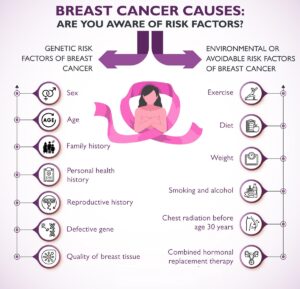Welcome to the exciting world of IT field service! If you’re here, you’re probably curious about what the future holds for this dynamic industry. The importance of IT field service cannot be overstated—it’s the backbone of our increasingly digital world. And what’s the secret sauce that keeps this backbone strong and flexible? You guessed it: metrics. These little numbers and data points guide everything from technician efficiency to customer satisfaction. So, what trends are shaping the future of these critical metrics? Let’s dive in!
Understanding IT Field Service Metrics
Before we jump into future trends, let’s get a grip on what IT field service metrics are all about. Essentially, these metrics are the performance indicators that help businesses monitor, measure, and optimize their field service operations. Think of them as the dashboard of a car, providing real-time information about speed, fuel level, and engine health. Key current metrics include response time, first-time fix rate, and customer satisfaction scores. These metrics ensure that services are delivered efficiently and effectively, keeping both clients and technicians happy.
The Evolution of IT Field Service Metrics
To appreciate where we’re headed, it’s useful to look back at where we’ve been. Historically, IT field service metrics were basic and manual, often recorded on paper or simple spreadsheets. With the advent of digital technology, these metrics have evolved significantly. Now, with advanced software and real-time data collection, businesses can track performance with precision and agility. This evolution has been driven by technological advancements, such as mobile devices and sophisticated analytics tools.
Trend 1: Integration of Artificial Intelligence
Artificial Intelligence (AI) is no longer just a buzzword—it’s a game-changer in IT field service metrics. AI can predict when equipment is likely to fail, allowing for proactive maintenance rather than reactive repairs. Imagine a world where your service team knows about a problem before the customer does! AI-driven analytics also provide deep insights into performance patterns, helping to optimize scheduling, routing, and resource allocation.
Trend 2: Increased Focus on Customer Experience
In today’s competitive market, customer experience is king. Real-time feedback tools allow customers to rate their service immediately after a job is completed, providing instant insights into service quality. Customer satisfaction scores (CSAT) are becoming a critical metric, as they directly impact customer loyalty and retention. Companies are now focusing on creating a seamless and delightful customer journey, from the initial service request to post-service follow-up.
Trend 3: Use of Internet of Things (IoT)
The Internet of Things (IoT) is revolutionizing IT field service by enabling smart devices and sensors to communicate in real-time. These devices can monitor equipment status and send alerts when anomalies are detected. This real-time data collection means issues can be addressed promptly, reducing downtime and improving service reliability. IoT is like having a network of digital scouts, constantly on the lookout for potential problems.
Trend 4: Enhanced Data Analytics
Big Data isn’t just for big corporations. In the field service industry, enhanced data analytics is transforming how businesses operate. By analyzing vast amounts of data, companies can uncover trends and patterns that inform strategic decisions. Data-driven decision-making allows for more accurate forecasting, better resource allocation, and improved service delivery. It’s like having a crystal ball that guides your every move.
Trend 5: Mobile Workforce Management
With the rise of mobile technology, field technicians are more connected than ever. Mobile apps provide technicians with real-time updates, access to customer information, and the ability to report job status on the go. This increased connectivity enhances efficiency and allows for more flexible and responsive service. Imagine a technician arriving at a job site with all the necessary information and tools at their fingertips, ready to tackle any challenge.
Trend 6: Automation and Self-service Solutions
Automation is taking over repetitive tasks, freeing up human resources for more complex issues. Automated troubleshooting systems can diagnose and sometimes even fix problems without human intervention. Additionally, self-service portals empower customers to solve minor issues on their own, reducing the workload on field technicians and improving customer satisfaction. It’s like having a virtual assistant that never sleeps!
Trend 7: Cloud Computing Integration
Cloud computing is revolutionizing IT field service by providing scalable and flexible solutions. Cloud-based service management systems allow for seamless data sharing and collaboration among team members, regardless of their location. The benefits of cloud technology include reduced IT costs, enhanced data security, and improved accessibility. It’s like having your entire office in the palm of your hand.
Trend 8: Emphasis on Cybersecurity
As field service operations become more digitized, cybersecurity is becoming a top priority. Protecting customer data and ensuring secure service operations are critical. Advanced security measures, such as encryption and multi-factor authentication, are being implemented to safeguard sensitive information. In the digital age, keeping your data secure is like having a virtual fortress guarding your most valuable assets.
Trend 9: Augmented Reality (AR) and Virtual Reality (VR)
AR and VR are no longer science fiction—they’re practical tools in IT field service. AR can provide technicians with real-time, hands-free access to information and instructions, while VR is being used for training and simulation. These technologies enhance problem-solving capabilities and reduce the learning curve for new technicians. Imagine being able to see a virtual overlay of a machine’s inner workings, guiding you step by step through the repair process.
Trend 10: Sustainability and Green IT Practices
Sustainability is becoming a significant focus in IT field service. Companies are adopting eco-friendly service strategies and sustainable resource management practices. This includes using energy-efficient equipment, reducing travel through remote diagnostics, and promoting recycling and proper disposal of electronic waste. It’s like going green, but with a tech twist.
Trend 11: Enhanced Collaboration Tools
Collaboration is key in field service operations, and advanced tools are making it easier than ever. Software that facilitates real-time communication and project management helps teams work more efficiently, even when spread across different locations. Virtual team management tools ensure everyone is on the same page, making coordination a breeze.
Conclusion
The future of IT field service metrics is bright and full of promise. With advancements in AI, IoT, data analytics, and more, the industry is set to become more efficient, customer-focused, and sustainable. These trends are not just improving metrics—they’re transforming the way field service is delivered, making it smarter, faster, and greener. So, whether you’re a technician on the ground or a manager strategizing from the office, staying ahead of these trends will ensure you’re ready for whatever the future holds.
More info: IT Field Service Management Trends
We think you’ll also like: Customer Experience Outsourced IT Field Services












